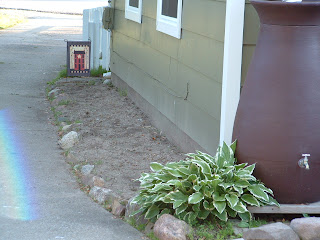Permaculture has always been an important goal in our garden planning. The ability to depend on a variety of small fruits and berries both for fresh eating and canning appeals to us.
I thought I'd showcase our efforts to this point, we are far from finished but definitely on the "path".
We have a lovely blueberry patch in the main garden. This is the second year for these bushes. They were purchased from Raintree Nursery in Morton, Wa. The young bushes transplanted well, and survived the winter in fine shape.
We have a total of eight plants that should provide a good harvest in the next few years.
For Mother's Day this year, my wife received a Sour Cherry from our children. This was a locally purchased tree in wonderful shape.
It was bought both as a celebration of Mother's Day and a memorial to her Dad who passed away last summer.
I am planning to add a second cherry near this one next month.
Last year we added an elderberry bush that was also purchased locally. Elderberry's have a long mythical history with Celtic peoples, and since my grandparents were Irish I thought it would be a fitting tribute to my ancestors to have an elderberry at StonePath.
Elderberry's were sacred in Saxony and much of the rest of the Celtic world. Their fruit have many uses beyond wine and jam, to include medicinal uses.
Grapes have long been the staple, permaculture kings at StonePath. Our vines are all Concord grapes, which are native to Ohio and thus very hearty.
Last year we made wine for the first time. It was a fun experiment but we're going to stick with jelly.
Frost hit the vines hard this year and I worried we would lose them, however, they came back with gusto.
This is the current state of affairs, however, we have plans that might include a dwarf apple orchard, more small fruits (perhaps raspberries), and an asparagus bed.




























